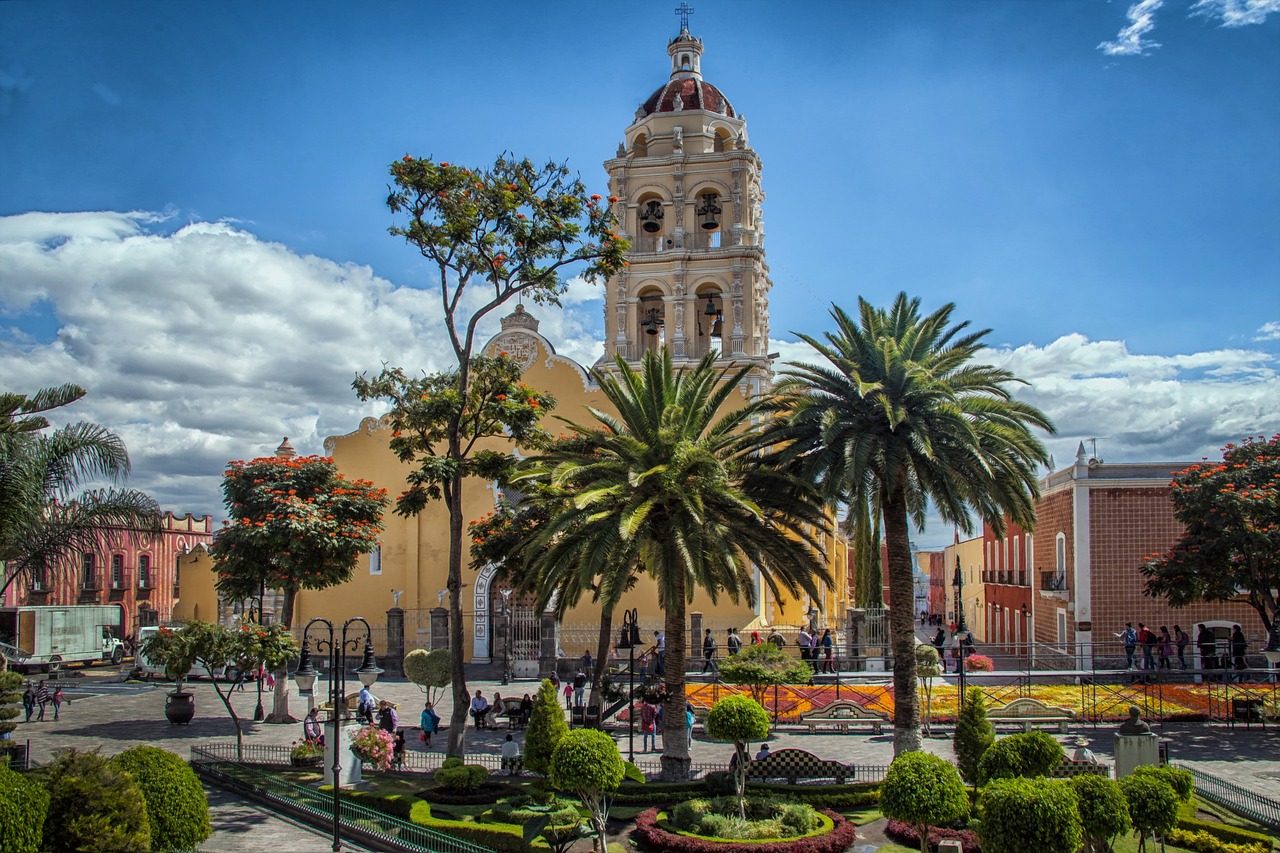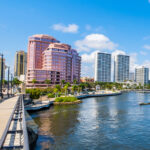Nestled in the heart of Mexico, between the bustling metropolis of Mexico City and the vibrant port of Veracruz, lies the city of Puebla. Recognized both for its rich history and culinary tradition, Puebla is a destination that promises a fusion of past and present, where every street corner tells a tale, and every meal is a celebration of flavors.
A Storied Past
Founded in 1531, Puebla is one of the oldest cities in Mexico. Its official name, “Puebla de los Ángeles,” or “Puebla of the Angels,” hints at the lore that angels themselves laid the city’s foundation. From its inception, Puebla has been a melting pot of indigenous and Spanish influences, which is evident in its culture, architecture, and traditions.
A walk through the historic center of Puebla transports visitors to a bygone era. Declared a UNESCO World Heritage Site in 1987, the city’s colonial architecture, characterized by its ornate churches, charming plazas, and colorful buildings adorned with the famous Talavera tiles, is a sight to behold.
The Catedral de Puebla is a crowning jewel of the city’s skyline. With its imposing façade and intricate interior, this cathedral is a testament to the artistic and architectural prowess of the colonial era.
Culinary Delights
If there’s one thing that Puebla is renowned for besides its historical landmarks, it’s its culinary tradition. Poblano cuisine is a blend of pre-Hispanic ingredients and Spanish influences. At its heart is the iconic dish, mole poblano. This rich, chocolate-infused sauce, laden with spices and served traditionally with turkey or chicken, is often called Mexico’s national dish. Legend has it that it was concocted accidentally by nuns in a Puebla convent. Today, it’s a staple in Mexican celebrations.
Another emblematic dish from Puebla is chiles en nogada. This dish, made of poblano chilies filled with a mixture of meat and dried fruits, topped with a walnut-based cream sauce and pomegranate seeds, represents the colors of the Mexican flag and is often associated with the country’s independence celebrations.
Talavera: The Art of Puebla
While the city offers a feast for the palate, Puebla is equally renowned for its contribution to the world of art, particularly in the form of Talavera pottery. This ceramic art, distinguished by its intricate patterns and vivid blue color, dates back to the colonial period when Spanish artisans introduced the pottery technique. Today, only a few workshops in Puebla and the nearby town of Atlixco can officially produce Talavera, adhering to strict guidelines to maintain its authenticity.
Festivals and Celebrations
Beyond its permanent attractions, Puebla is also a hub for various festivals and celebrations. One of the most significant events is the Cinco de Mayo celebration, which commemorates the Battle of Puebla in 1862, where the Mexican army defeated the French. Contrary to popular belief, especially in the United States, Cinco de Mayo isn’t Mexico’s Independence Day, but in Puebla, it’s a grand affair with parades, reenactments, and a general festive atmosphere.
Natural Wonders
While the city itself is a treasure trove, the state of Puebla offers even more for nature lovers. The Iztaccíhuatl and Popocatépetl volcanoes dominate the region’s landscape. Popocatépetl, often called “El Popo,” is one of Mexico’s most active volcanoes, and its snow-capped peak contrasts beautifully with the blue sky on a clear day.
For those looking for a more serene natural setting, the Laguna de Alchichica, a saline lake located to the east of the city, is a hidden gem. Its clear blue waters and unique flora and fauna make it a perfect getaway.
A City of Resilience
Puebla’s story is also one of resilience. Over the years, it has witnessed wars, invasions, and natural disasters. Yet, the city stands proud, bearing testimony to its indomitable spirit. The warmth of its people, their passion for preserving traditions while embracing modernity, is evident in every aspect of life in Puebla.
Puebla, with its harmonious blend of history, culture, and natural beauty, is a must-visit for anyone wanting to experience the essence of Mexico. Whether you’re a history buff, a food enthusiast, an art lover, or simply someone looking to immerse yourself in a rich cultural tapestry, Puebla awaits with open arms and a promise of unforgettable experiences.
Puebla’s Artistic Heartbeat
A city with a rich past, Puebla is also an epicenter of art and creativity. Strolling through the streets, one can easily find a range of galleries showcasing contemporary art, traditional crafts, and everything in between. Street murals, often reflecting societal themes or historical events, bring color and life to the city’s old walls.
In addition to its visual arts, Puebla has a lively performance arts scene. Theaters such as the Teatro Principal, one of the oldest in America, regularly host plays, ballets, and concerts. For those interested in the region’s traditional music and dance, sones and huapangos from the Sierra Norte are integral to Puebla’s cultural heritage.
The Magic of Nearby Towns
While the city of Puebla is a marvel in itself, the state of Puebla is dotted with “Pueblos Mágicos” or “Magical Towns.” These towns, like Cholula, are known for their cultural, historical, and natural significance. Cholula, for instance, is home to the Great Pyramid of Cholula, which, in terms of volume, is the largest pyramid in the world. A visit to the Sanctuary of the Virgin of the Remedies, perched atop this pyramid, offers panoramic views of the city below.
Another such town is Atlixco, famous for its flower markets and the ornate San Felix Parish. Located at the foot of the Popocatépetl volcano, Atlixco also boasts the title of “The Best Climate in the World,” making it a favorite among both tourists and locals.
Modern-Day Puebla
While deeply rooted in its traditions, Puebla is not untouched by modernity. The city is a growing hub for industries, especially the automotive sector, with many international companies establishing their manufacturing units here. This balance between the old and new is palpable in Puebla’s infrastructure and lifestyle. Traditional markets or tianguis coexist with modern shopping malls, and centuries-old cathedrals stand tall alongside contemporary buildings.
Puebla’s education sector is also noteworthy. Institutions such as the Universidad de las Américas Puebla (UDLAP) have garnered international recognition, drawing students from across the globe.
Sustainability and Future Vision
In recent years, Puebla has taken strides towards sustainable development. The city has been proactive in promoting eco-friendly transport options, preserving its green spaces, and implementing waste management strategies. The Parque Lineal, a green corridor running through the heart of the city, is a prime example of Puebla’s commitment to creating an urban space where nature and humanity coexist harmoniously.
As Puebla looks towards the future, it aims to be a city that, while being a beacon of progress, remains firmly anchored in its illustrious past.
Puebla’s allure lies in its ability to offer a multi-faceted experience. Every visit unveils a new layer, be it in the form of an undiscovered culinary delight, a hidden architectural gem, or a captivating story from its rich tapestry of history. In Puebla, the past, present, and future come together in a beautiful symphony, making it a destination that resonates with every traveler’s soul.







